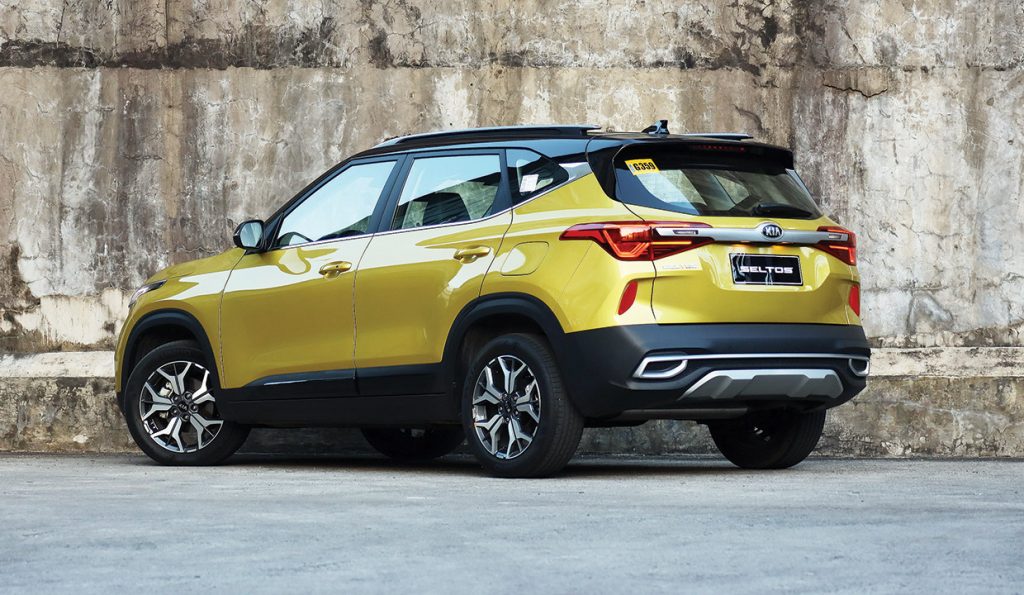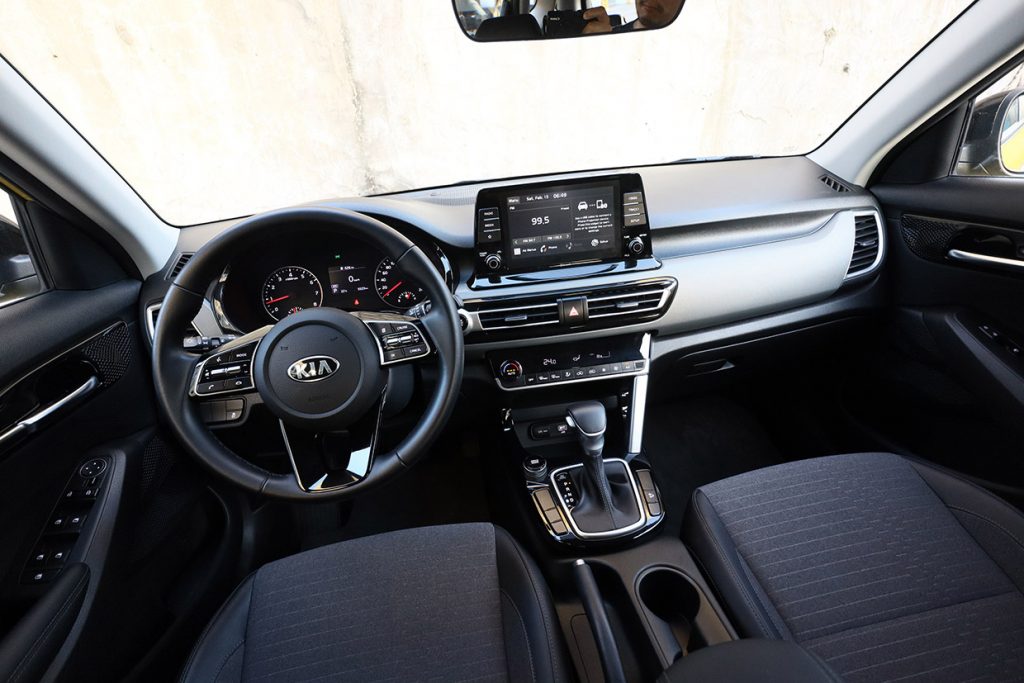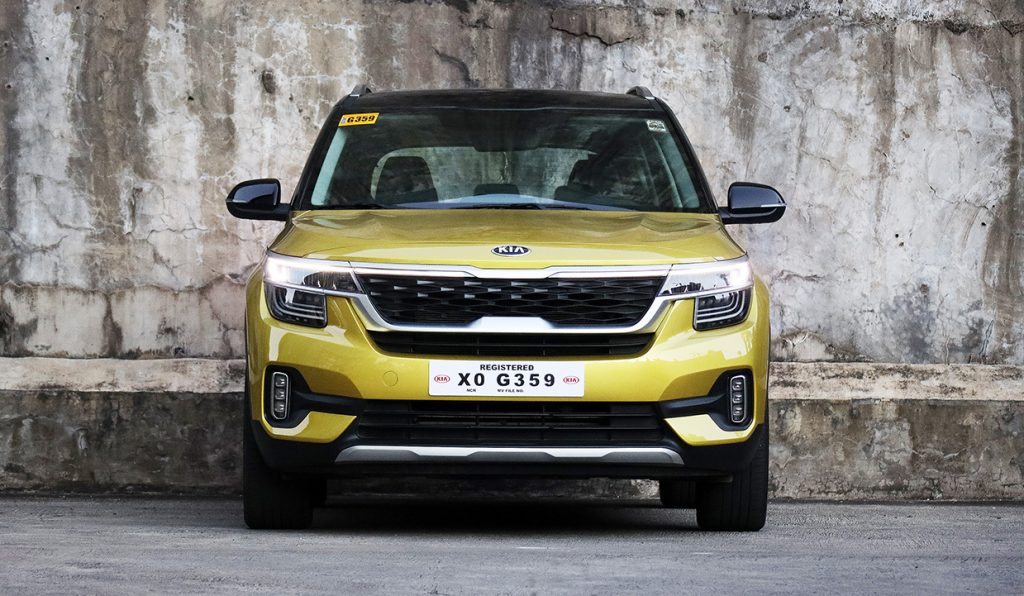Samgyupsal. Black Pink. Finger hearts. Korean pop culture has invaded the Philippines in a big way. So it’s a surprise that their cars haven’t exactly done the same. Their successful invasion of global popular culture, seen from gadgets to music to food, now extends to cars as well with the Kia Seltos being that invasive force in the compact crossover segment.
Boxy and squarish, the Seltos wears its uniqueness on its sleeve. It’s stylish and contemporary, just like other models from Kia’s stable; only in this case, things have been cranked up to 11. The playful details from the large headlights to the grille to the roof rails all feel exaggerated, and even needlessly ornamental in some way, but taken as a whole, works well to give it head-turning looks.

Also working in its favor is its size. Though classified as a subcompact SUV, in reality, it sits somewhere between the Hyundai Kona (which it shares its platform) and the Kia Sportage.
That futuristic, exaggerated vision of the future doesn’t quite extend to the Seltos’s interior, though. There are some playful elements like the center-tunnel-mounted grab handle and the geometric speaker cover, but overall, it reverts back to Corporate Kia down to some hard plastics on the dashboard and door panels. Nonetheless, at least its straightforward demeanor means it’s easy to understand. Ergonomically, it’s well-polished with the chunky three-spoke steering wheel, nicely bolstered seats, and controls positioned where you’d expect to find them.

Now, normally subcompact crossovers prioritize front seat comfort over everything else, but the Seltos takes a different approach. It offers more head-, shoulder, and leg room in both first and second rows compared to even the Honda HR-V—a crossover that’s generally considered large for its size. More than that, they’ve managed to sculpt the rear seats as not to overly punish the person sitting in the middle. Plus, the rear seats offer adjustable recline (from 26 to 32 degrees), too. If only they’d throw in a center armrest at the back, then it’d be complete.
Given Kia’s emphasis on connectivity, the Seltos’s infotainment system is sublime. The eight-inch screen size alone is generous, but more than that, it scores high in functionality and usability as well. Not only does it work even directly sunlight (take note, Honda), but it’s the first in the segment that allows two devices to pair via Bluetooth simultaneously. This means, the driver can use his mobile phone’s hands-free feature, while the passenger can listen to his music playlist on a different mobile device. Apple CarPlay and Android Auto are standard as well.

All variants of the local Seltos line-up come with just one engine choice: a 2.0-liter four-cylinder engine generating 149hp and 179Nm of torque. If these power figures seem low for its displacement, it’s because it uses an Atkinson cycle. This special engine, where the intake valve is held open longer than in a conventional setup, improves fuel efficiency at the expense of outright power. True enough, it does a combined city/highway figure of 13.5 km/L.
Overall, it’s a smooth motor that feels peppy off the line and reasonably fluid at slow to medium speeds. At higher speeds, the engine tends to become more vocal, but remains refined nonetheless. Near the shifter, there’s a rotary knob for selectable driving modes, but there wasn’t enough time to fiddle with it during this drive. Kept at Normal, things felt well-balanced.
Coupled with the engine is what Kia calls, Intelligent Variable Transmission or IVT. Now, it’s hard to be fond of CVTs because of their rubbery, noisy, and artificial characteristics, but the one in the Seltos behaves rather well. Thanks to a chain-link-type belt and an adaptive shift logic, it mimics a conventional automatic transmission.
Overall, the Seltos handles well too. It still doesn’t fully make an emotional connection with the driver, but it’s actually nimble and a bit of fun to toss around. With a 5.3-meter turning radius, it turns on a dime, but weighs up nicely at speed. It fends off body roll effectively, and can take a switchback with more gusto. Even better, it rides well on a multitude of road surfaces. On really rough roads, it sometimes tends to lose this sense of refinement, but at least the damping is good enough to quell the nastiest of bumps.
It’s hard to imagine the world needing another subcompact SUV to choose from right now, but competition breeds quality, and this has certainly helped Kia bring its A-game with the Seltos. The party may have already started a couple of years ago, but hot on the heels of a revitalized distributor, Kia’s finally got a model that knows how to boogie.

